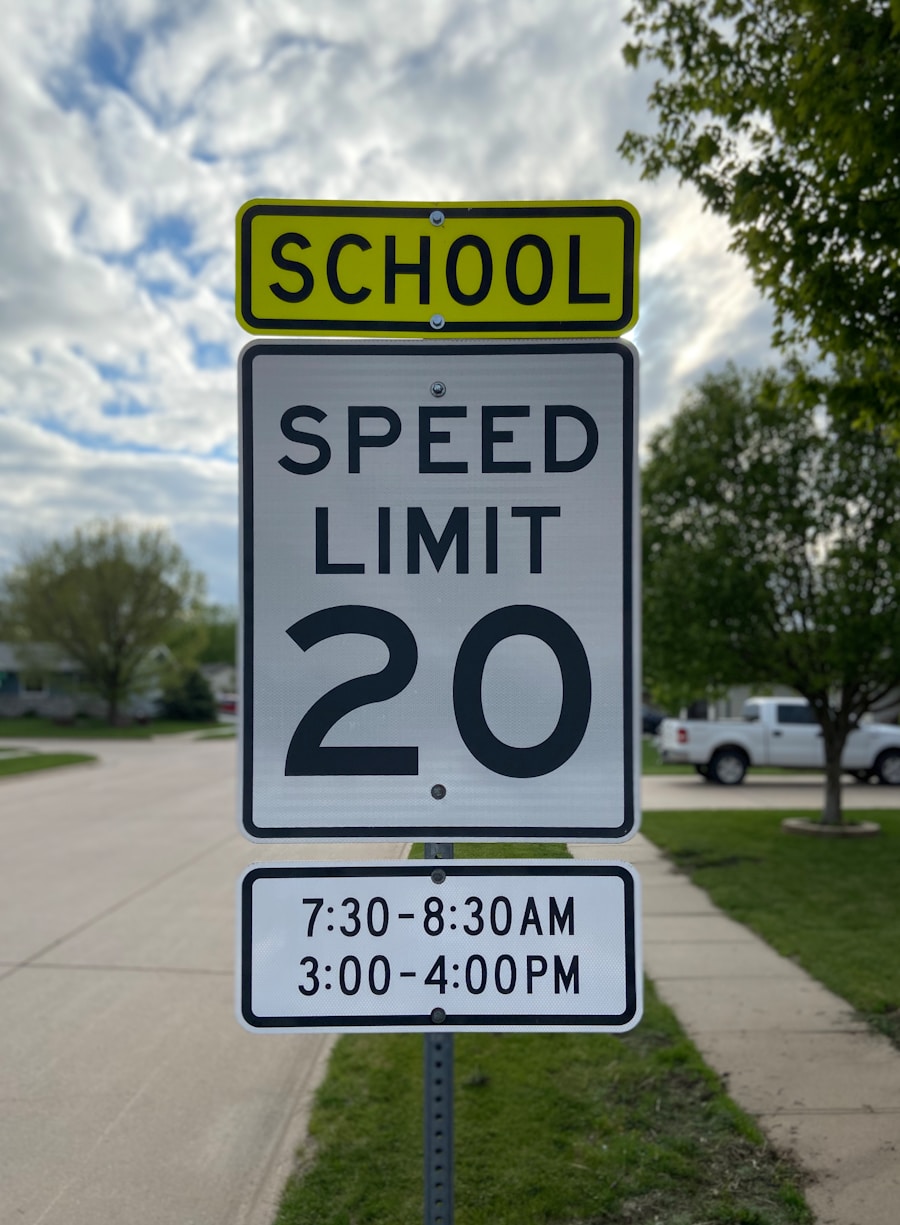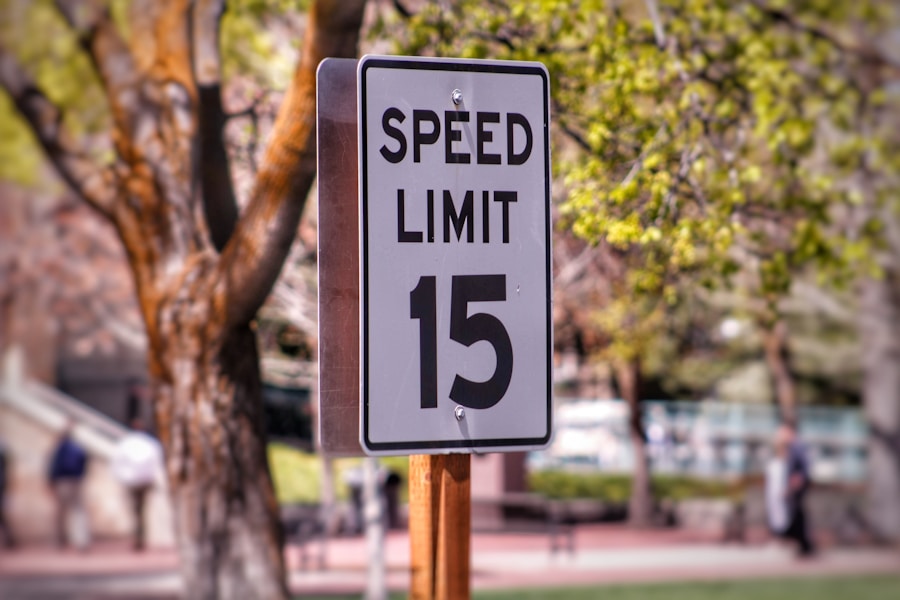Speeding in school zones is a critical issue that affects the safety of children and the broader community. These areas are specifically designated to protect young pedestrians and cyclists, who are often less aware of their surroundings and more vulnerable to accidents. The presence of school zones is not merely a regulatory formality; it is a vital public safety measure aimed at reducing the risk of collisions during peak hours when children are arriving at or leaving school.
Speed limits in these zones are typically lower than those on adjacent roads, reflecting the heightened risk associated with the presence of children. The enforcement of speed limits in school zones is stringent, with law enforcement agencies often deploying speed cameras and patrols to catch violators. The consequences of speeding in these areas extend beyond immediate legal repercussions; they can also have long-term implications for drivers, particularly concerning insurance rates.
Understanding the ramifications of speeding tickets in school zones is essential for drivers who wish to maintain their insurance premiums and ensure the safety of their communities.
Key Takeaways
- Speeding in school zones is a serious offense that can have long-term consequences on insurance rates and driving privileges.
- Speeding tickets in school zones can lead to significant increases in insurance rates, as insurers view this behavior as high-risk and irresponsible.
- Factors such as the driver’s age, previous driving record, and the severity of the speeding violation can all impact the extent of the insurance rate increase.
- Insurance rate increases for speeding in school zones are typically higher than those for other traffic violations, due to the increased risk to children and pedestrians.
- Repeated speeding in school zones can result in even more severe consequences, including potential loss of insurance coverage and increased difficulty in finding affordable rates.
Impact of Speeding Tickets on Insurance Rates
Receiving a speeding ticket can have a significant impact on a driver’s insurance rates, particularly when the infraction occurs in a school zone. Insurance companies assess risk based on a variety of factors, including driving history, the frequency of violations, and the severity of those violations. A speeding ticket, especially in a sensitive area like a school zone, signals to insurers that a driver may not prioritize safety, which can lead to increased premiums.
The increase in insurance rates following a speeding ticket can vary widely depending on the driver’s previous record and the specific circumstances surrounding the violation. For instance, a driver with a clean record may see a more substantial increase than someone with multiple infractions. On average, drivers can expect their insurance premiums to rise by 20% to 30% after receiving a speeding ticket, but this percentage can be even higher for violations in school zones due to the added risk factor associated with these areas.
Factors Affecting Insurance Rates After Speeding in School Zones

Several factors influence how much a speeding ticket in a school zone will affect an individual’s insurance rates. One primary consideration is the speed at which the driver was caught exceeding the limit. For example, a driver going just a few miles per hour over the limit may face a smaller increase in their insurance premium compared to someone who was significantly over the limit.
Additionally, the driver’s overall driving history plays a crucial role; those with prior violations may experience steeper increases due to their established pattern of risky behavior. Another important factor is the state in which the violation occurred. Different states have varying laws regarding traffic violations and their impact on insurance rates.
Some states may have more lenient policies that allow for forgiveness of first-time offenses, while others impose strict penalties regardless of prior history. Furthermore, the type of insurance policy held by the driver can also affect how much their rates will increase. For instance, drivers with comprehensive coverage may see different adjustments compared to those with minimum liability coverage.
Speeding tickets issued in school zones often result in higher insurance rate increases than similar violations committed outside these designated areas. This discrepancy arises from the heightened risk associated with driving near schools, where children are present and more likely to be involved in accidents.
For example, while a standard speeding ticket might lead to an average increase of 20% in insurance premiums, a ticket received for speeding in a school zone could result in increases ranging from 30% to 50%. This stark contrast underscores the seriousness with which insurers view violations that occur in proximity to schools. Other violations, such as running a red light or driving under the influence, also carry significant penalties; however, they may not always result in as steep an increase as speeding in school zones due to the specific dangers posed to children.
Consequences of Repeated Speeding in School Zones on Insurance Rates
| Consequence | Impact on Insurance Rates |
|---|---|
| Speeding Tickets | Increased premiums by 20-30% |
| Accidents in School Zones | Increased premiums by 50-100% |
| License Points | Increased premiums by 10-15% |
| Loss of Good Driver Discount | Increased premiums by 15-25% |
Repeated offenses for speeding in school zones can lead to severe consequences for drivers, particularly regarding their insurance rates. Each additional violation compounds the risk perceived by insurance companies, leading to progressively higher premiums. A driver who receives multiple tickets within a short timeframe may find themselves categorized as a high-risk driver, which can result in even more substantial increases or difficulty obtaining affordable coverage.
Moreover, some states have point systems that assign points for traffic violations, including speeding tickets. Accumulating points can lead to further penalties, such as license suspension or mandatory traffic school attendance. These additional consequences not only affect driving privileges but also contribute to long-term increases in insurance costs.
Insurers may view repeated offenses as indicative of reckless behavior, prompting them to raise premiums significantly or even deny coverage altogether.
Strategies to Avoid Insurance Rate Increases After Speeding in School Zones
To mitigate the impact of speeding tickets on insurance rates, drivers can adopt several proactive strategies. First and foremost, adhering strictly to speed limits in school zones is essential. Familiarizing oneself with local traffic laws and being mindful of posted signs can help prevent infractions before they occur.
Additionally, utilizing technology such as GPS apps that provide real-time traffic updates and alerts about speed limits can serve as valuable tools for maintaining safe driving habits. If a driver does receive a speeding ticket, they should consider attending traffic school if it is an option available in their state. Successfully completing a defensive driving course can sometimes lead to the dismissal of the ticket or at least prevent points from being added to their driving record.
Furthermore, maintaining open communication with their insurance provider can help drivers understand their options and any potential discounts available for safe driving practices.
Importance of Safe Driving in School Zones for Insurance Rates

Safe driving practices in school zones are not only crucial for protecting children but also play an essential role in managing insurance costs. By prioritizing safety and adhering to speed limits, drivers can avoid tickets that would otherwise lead to increased premiums. Moreover, demonstrating responsible driving behavior can positively influence an individual’s overall driving record, which is a key factor insurers consider when determining rates.
Insurance companies often reward safe drivers with lower premiums or discounts for maintaining a clean record over time. This creates an incentive for drivers to remain vigilant and cautious while navigating school zones. Additionally, many insurers offer programs that monitor driving habits through telematics devices or mobile apps, allowing conscientious drivers to potentially lower their rates by demonstrating safe driving behaviors consistently.
Conclusion and Recommendations for Drivers in School Zones
In light of the significant implications that speeding tickets can have on insurance rates, it is imperative for drivers to approach school zones with caution and respect for traffic laws. Understanding the potential consequences of speeding not only helps protect children but also safeguards one’s financial well-being regarding insurance costs. Drivers should remain vigilant about their speed and be aware of their surroundings when navigating these critical areas.
To further enhance safety and minimize risks associated with speeding tickets, drivers are encouraged to engage in continuous education about traffic laws and safe driving practices. Utilizing technology and resources available through insurance providers can also aid in maintaining safe driving habits while potentially lowering premiums over time. Ultimately, fostering a culture of safety within school zones benefits everyone—children, parents, and drivers alike—creating safer communities for all.
According to a recent study by Fair Shot Financial, speeding in a school zone can indeed raise insurance rates significantly. In fact, their article on auto insurance rates highlights how risky driving behaviors, such as speeding in school zones, can lead to higher premiums. To learn more about how speeding can impact your insurance rates, check out their article on


